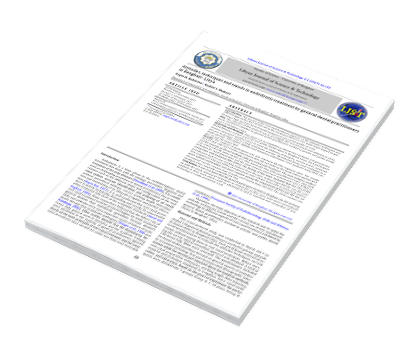Attitudes, techniques and trends in endodontic treatment by general dental practitioners in Benghazi- Libya
DOI:
https://doi.org/10.37376/ljst.v6i1.2545Keywords:
Root canal procedure, endodontic trends, general dental practitioners, questionnaire surveyAbstract
Introduction: The success of the root canal treatment depends on the attitudes, techniques and different approaches that carried out by the dental practitioners who made major impact on performing a high standard level of dental treatment to get a great quality of work. Aim: The objective of this research was to investigate the current trends and attitudes in endodontic treatment exhibited by general dental practitioners worked in private and public dental clinics in Benghazi- Libya.
Materials and Methods: This study was accomplished in March 2017 included 170 general dental practitioners worked in private and public dental clinics in Benghazi Libya. Each participant received structured questionnaires to assist the attitudes, techniques, current trends, materials and new technology used in a daily endodontic practice. All returned forms were evaluated by a single operator. Descriptive statistics and frequency distribution were analyzed using SPSS version 21 and Chi-square test.
Results: The respond of participants was 150 represent 88.23% response rates. The results showed that 78% (117) of the respondents they did not build up the tooth before starting RCT and the majority preferred multiple visits per endodontic treatment. The main isolation method was cotton roll with saliva suction (77.3%). About (43.3%) of the practitioners used step-back technique for canal preparation and the most common used hand instruments was a K-files in conjunction with hedstrom files (50%). The finding of this study indicated that (52.7%) of the practitioners took 0.5 mm working distance from the apex. Sodium hypochloride was the common irrigant (55.3%) and (38%) of respondents used calcium hydroxide as intracanal medicament. Lateral condensation was more common among the respondents (64%) and the zinc oxide-eugenol was the common type of sealer used among them (45.3%). The most common restorations were composite materials (34.7%). Conclusion: It was concluded that the general participant dentists in Benghazi city did not keep up with the newly introduced techniques in endodontic as they were used more conventional methods in their work which could be attributed to lack in expertise and recognition of new technology in a daily endodontic work.
Downloads










 LJST Copy rights form
LJST Copy rights form


